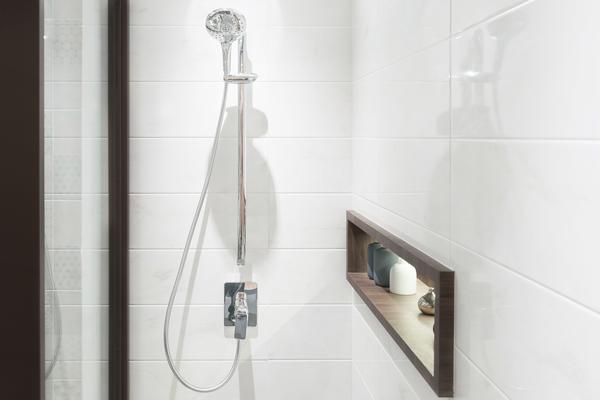5 Acrylic Shower Room Troubles and Solutions
5 Acrylic Shower Room Troubles and Solutions
Blog Article
{Show Details The article in the next paragraphs involving Hiring a Plumbing Company is highly attention-grabbing. You should take a peek. We recommend that you clean your acrylic bathing product made of Delta ProCrylic or Acrylic with Innovex Technology with non-abrasive soaps and cleaners, such as: When it’s time to clean, always use a terry cloth towel, soft cloth or sponge to avoid scratching the acrylic surface. Don’t use abrasive scrubbing pads, steel wool or sponges, cause permanent damage to the acrylic material. If you use a drain cleaner or clog remover, be sure to rinse thoroughly with water so no product is left standing near the drain. Some chemicals and cleaners may deteriorate acrylic surfaces, causing cracks and, potentially, property damage. To avoid this, don’t use cleaning products that state on their label that they are not suitable for use on Acrylic, ABS, Polystyrene or Plastic. Be sure to check the label of any product before you apply it to the surface; it’s easier to avoid damage than to try to remedy it. Chemicals we do not recommend using to clean acrylic showers/tubs: When you’re ready to apply sealant, a little planning goes a long way. Pick up some painter’s tape and use it to mask off the seam to help make cleaning up easier. When you’re applying the bead, use a constant, steady speed to avoid an uneven finish. Use a caulk tool or a plastic spoon to work the sealant into the joint. Wetting the tool with denatured alcohol will help create a smooth finish. Follow the directions on the back of the tube for cure time. Certain chemicals and cleaners may deteriorate acrylic surfaces, causing cracks and, potentially, property damage. After you’re finished applying it, clean up the product surface and remove any excess sealant with denatured alcohol. Don’t use solvents (turpentine, lacquer thinner, mineral spirits, paint thinner, MEK, xylene, acetone, naphtha, etc.) that can wreak havoc on an acrylic surface. With a little care and consideration, you can prevent damage to your acrylic shower or tub. Keep a supply of soft cloths handy and remove any damaging products or abrasive scrubbing items from the bathroom to ensure they aren’t around when it’s time to clean. https://www.deltafaucet.com/design-innovation/inspiredliving/how-to-clean-acrylic-shower I was introduced to that write-up on Hiring a Plumbing Company through someone on our other web address. So long as you enjoyed our blog post plz do not forget to share it. We enjoy reading our article about 6 Things to Know About When Hiring a Plumbing Services.
Polymer bathrooms, shower trays, and other acrylic restroom ware have come to be much more usual in shower rooms in current times. Not as long lasting and also sophisticated as enamel and also porcelain baths as well as components, they are a lot more economical and also serve rather much the exact same standard function. Some usual examples of damage to acrylic washroom fixtures include staining, cracks, holes, and so on.Bathroom Discoloration
With extended use of acrylic baths comes staining or staining. While some spots can be gotten rid of easily, utilizing unique chemicals, others require that the bathroom be resprayed. It is important to note that bleach or cleaning agents do really little in removing such discoloration and also they might even worsen it. A lot of times, these cleansing representatives induce discoloration gradually. Aromatherapy oils loosen up the dust in some cases thus recovering the bathroom to its former glory. Cleaning up and also brightening additionally sometimes. For even more persistent stains, you will need a new layer of finish. This sort of fixing will require an expert.Chemical Reactions
In some cases, individuals try to paint the whole surface of their acrylic bath by themselves either because they do not like the shade to hide imperfections. When they do not like the end result, they use paint cleaners. You must never use paint remover on acrylic bathrooms. Paint cleaners do not react with the surface area of metal baths, they damage acrylic bathrooms irreversibly. This produces even more work for the professional. The most effective course of action here is to call a specialist for aid with changing the bath.Damaged shower or bath surface area
Polymer restroom components are not abrasion-resistant like enamel selections. They are a lot more vulnerable to scratches and much less durable. Being an extremely soft product, acrylic scrapes can even be concealed without finishing or dental filling. For these, you need to seek professional assistance for your bath repair work. As an avoidance pointer, prevent utilizing abrasive sponges when cleansing. Instead, you need to utilize a straightforward liquid cleanser with a soft pad.Fractured Acrylic Baths
The life expectancy of acrylic and fiberglass baths depends on 15-20 years for shower frying pans and also baths, normally. Splits in an acrylic shower tray are probably amongst the most convenient problems to fix for a repair expert. The very best component is you get to see the results nearly immediately. This is the same for PVC, material, and other such products. A minute crack must be taken care of promptly before it spreads additional leading to extra extreme damage. While these can be chosen a spending plan tackily, a professional can aid you get it finished with more skill for a cost. Quick residence fixes can be done with epoxy resins however if the outcome ends up poorly, this would make the fixing much more difficult for an expert.
Polymer baths, shower trays, and other acrylic bathroom ware have actually come to be extra usual in washrooms in current times. With extended usage of acrylic baths comes discoloration or discoloration. You must never use paint remover on acrylic bathrooms. Paint eliminators do not respond with the surface of metal bathrooms, they damage acrylic baths irreversibly. The lifespan of acrylic as well as fiberglass baths is up to 15-20 years for shower pans and bathrooms, typically.How to clean Acrylic shower
USE THESE NON-ABRASIVE CLEANERS
DO NOT USE THESE CLEANERS
Sealant Application Tips

Set Up An Appointment